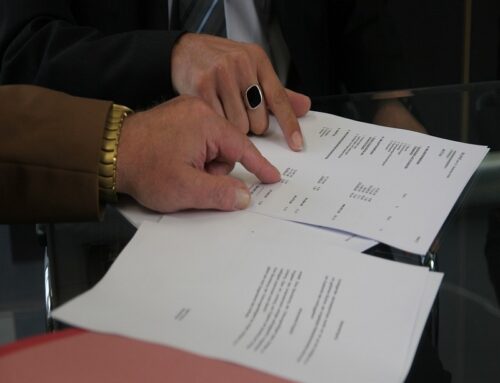Ontario Separation Agreement: Pension Plan Division
Dividing pensions during separation is one of the most complex aspects of property division under Ontario law. It is essential to understand how the Ontario Family Law Act treats pension assets and what steps are involved in addressing their division in a separation agreement.
Understanding Pension Division under Ontario Law
In Ontario, the Family Law Act governs the division of pension assets when spouses separate. Pensions are considered a type of family property, meaning they are subject to equalization during separation, just like any other significant asset such as a home or savings account.
Defined Benefit vs. Defined Contribution Pension Plans
Ontario law recognizes two primary types of pension plans:
- Defined Benefit Pension Plans: These pensions guarantee a specific monthly payment during retirement based on a formula, often involving years of service and salary. When dividing this type of pension, the potential future value is a crucial factor in the calculation.
- Defined Contribution Pension Plans: In these plans, the value is determined by the contributions made by the employee and/or employer, plus any investment growth or losses. The division of this pension is generally more straightforward, as the current account value can be used for division.
Understanding the type of pension plan involved is critical, as it determines the valuation method and how the pension will be split in the separation.
Steps to Address Pension Division in a Separation Agreement
Valuation of Pensions
Before dividing a pension, its value must be determined. The value is calculated as of the date of separation, reflecting the amount accumulated during the marriage. To obtain this value, one spouse (the plan member) can request a Family Law Value (FLV) statement from the pension plan administrator. This document will provide a detailed valuation of the pension benefits accrued during the marriage.
Equalization Payment
Pensions form part of the Net Family Property (NFP), which is the total value of assets accumulated by each spouse during the marriage minus debts. The pension’s value is added to the total property, and an equalization payment is calculated to ensure both spouses share equally in the value of the family property. This means the spouse without the pension may receive other assets or payments to equalize the division of property, rather than a direct share of the pension itself.
Direct Pension Division
In some cases, spouses may opt for a direct pension division. This allows the pension plan to be split immediately between the spouses. The spouse entitled to a share of the pension would receive their portion either as a lump sum or as payments when the pension-holding spouse begins receiving retirement benefits. To initiate this process, the spouses must file specific forms with the pension plan administrator, such as FSCO Family Law Form 8, which details the agreement to divide the pension.
Payment Options
When dividing a pension, spouses typically have two primary payment options:
- Lump Sum Payments: This option involves the immediate transfer of funds from the pension to the non-member spouse. This can be done through a pension payout or by offsetting the pension value against other family assets, such as the matrimonial home.
- Deferred Pension Sharing: In this option, the non-member spouse will receive a share of the pension when the member spouse retires. While deferred sharing offers long-term security, it may also involve the risks associated with waiting for retirement payouts.
Choosing between a lump sum payment and deferred pension sharing depends on the financial needs and preferences of each spouse. A lump sum may provide immediate financial flexibility, while deferred payments ensure future security.
Key Considerations When Drafting Pension Division Provisions
Spousal Consent
One of the most important aspects of pension division is obtaining spousal consent. Both spouses must agree on the terms of the division, as it is a legally binding part of the separation agreement. Consent ensures that both parties fully understand the long-term financial implications of dividing a pension. It is essential that each spouse consults with a lawyer or financial advisor to evaluate the consequences of the proposed pension division before finalizing the agreement. Key questions that both spouses should consider include:
- What is the value of the pension?
- How will the pension division affect overall retirement income?
- What are the immediate vs. deferred payment options?
Without clear spousal consent, disagreements may arise later, which could lead to additional legal costs and financial uncertainty.
Survivor Benefits
Survivor benefits are another important consideration in pension division, particularly for defined benefit pension plans. These benefits are typically paid to a designated beneficiary (often the spouse) if the plan member dies. When spouses separate, it must be determined who will receive the survivor benefits.
There are two common options:
- Ex-Spouse as Beneficiary: The separating spouses can agree to keep the ex-spouse as the beneficiary of survivor benefits. This can provide financial security to the ex-spouse in the event of the plan member’s death.
- Children as Beneficiaries: In some cases, the couple may choose to allocate survivor benefits to their children instead. This option might be preferable if the couple wants to secure their children’s financial future.
When drafting the separation agreement, it is crucial to specify how survivor benefits will be handled to avoid any confusion or legal disputes down the road. If the ex-spouse is to remain the beneficiary, they may need to sign a spousal waiver confirming their consent to receive the benefits.
Impact on Retirement Planning
The division of a pension can have significant implications for both parties’ retirement plans and income security. It is essential to consider how splitting the pension will affect each spouse’s ability to maintain their desired standard of living in retirement.
Key points to consider include:
- Reduced Retirement Income: If the pension is divided, the spouse who holds the pension will have a reduced retirement income, which may require them to adjust their retirement plans or seek alternative income sources.
- Equalization of Retirement Savings: The non-pension-holding spouse may receive a portion of the pension, but this may still leave a gap in retirement savings. Both parties should consider how the pension division fits into their broader financial strategy, including contributions to RRSPs or other retirement savings vehicles.
- Tax Implications: Both spouses should consider the tax implications of dividing the pension. Pension income is generally taxable, and splitting the pension may result in different tax obligations for each party. Consulting a financial advisor or tax professional can help ensure that the pension division is tax-efficient and aligned with both parties’ financial goals.
By addressing these key considerations, separating couples in Ontario can ensure that their pension division is fair, legally sound, and supportive of their long-term financial and retirement planning. A well-drafted separation agreement will provide both parties with the clarity and security needed to move forward with confidence.
Numan Bajwa is the Founding Partner at Bluetown Law – Family Lawyers. He earned his Juris Doctor from the University of Detroit Mercy School of Law (2011–2014) and holds an Honours degree in Criminology from the University of Windsor (2003–2008).









